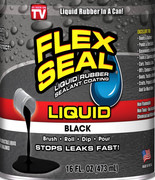Go  | New  | Find  | Notify  | Tools  | Reply  |  |
| Member |
I have a small job doing a metal roof. Classic issue, metal flashing up against a brick wall. Exactly the type of thing you would see with a chimney coming out of a pitched roof. In my case the pitch is 4:12 and the length of the flashing is almost 8’. I have 4 of these to do. 32’ total. I do not want to use an abrasive saw and cut into the brick. I also do not want to do any stepped flashing. Given those details, what is the best way to seal the metal flashing to the brick? | ||
|
Member |
Caulk it with clear silicone behind the flashing. Demand not that events should happen as you wish; but wish them to happen as they do happen, and you will go on well. -Epictetus | |||
|
| Member |
Mastic water cutoff sealant, but I HIGHLY recommend doing a cut-in apron flashing, even though it sucks to do. Anything less will leak in due time | |||
|
| Member |
Appreciate the input. Looking for more ideas. Any REALLY GOOD adhesives for brick to metal? Waterproof too? | |||
|
| semi-reformed sailor |
| |||
|
Alea iacta est |
The only way to do it right, is to cut it in. Otherwise water, gravity, and the failure of the sealant will cause leaks. It sucks. 32’ of cutting bricks. But two hours later, you’ll be doing the job right. No offense, but this is what you’re being paid to do. You weren’t hired to do a half assed job. I flashed in an awning over my patio in Washington. First time was with screws and silicone. Then there were the ten other things I tried to stop the water. Then I flashed it in under the z bar. Years later, never a drop of water. Simply outsmarting water and gravity. It’s up to you. But I would suggest doing it the right way.
| |||
|
| Observer |
Similar to how a TPO (single ply membrane roof) is detailed may work. A continuous rigid batten is screwed over the flashing to draw the material tightly to the wall to minimize the gap. Then the reduced gap receives a bead of sealant. In the end, it still comes down to a sealant joint that has to be maintained. Stepped, cut-in flashing has a pretty good track record, however. All the best with the project! phxtoad "Careful man, there's a beverage here!" | |||
|
Caribou gorn |
Can you do it with a reglet or a termination bar? Reglet:  I'm gonna vote for the funniest frog with the loudest croak on the highest log. | |||
|
| Member |
Similar for my house in WA state. The flashing had pulled away from the brick chimney on 3 sides. Only one side was cut-in, and that hadn't pulled away in over 40 something years. Contractors quoted different prices. All said they would use caulking, which appeared to be the problem in the first place. Don't recall the pitch ... One contractor said that the chimney would have to be rebuilt. $10k. Ridiculous. Ended up having a friend in the trade help; cut-in brickwork on the 3 sides. Done in 2 hours - more jawing less cutting. So, yes, a pain. Doing what's right. We are all born ignorant, but one must work hard to remain stupid." ~ Benjamin Franklin. "If anyone in this country doesn't minimise their tax, they want their head read, because as a government, you are not spending it that well, that we should be donating extra...: Kerry Packer SIGForum: the island of reality in an ocean of diarrhoea. | |||
|
| Member |
Again, appreciate all the input. Thinking hard about the cutting in, caulk the groove and press in the Z flashing. Part of the issue is the mortar joints are struck square and stepped 3/8” deep. That makes for a pretty deep cut. It also makes for a lot of caulk to fill those joints if I don’t cut it in. Was hoping for some “new” cure-all solution that didn’t required permanent scars on the building. Guessing that hasn’t happened yet. | |||
|
| Powered by Social Strata |
| Please Wait. Your request is being processed... |
|
© SIGforum 2025
